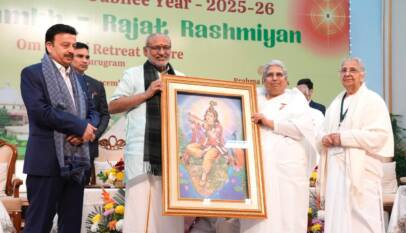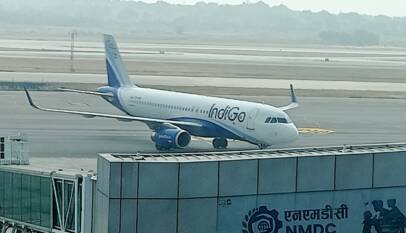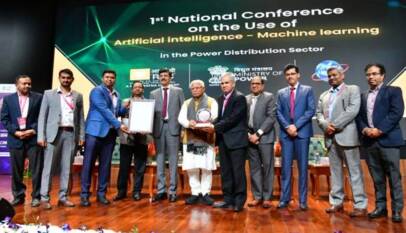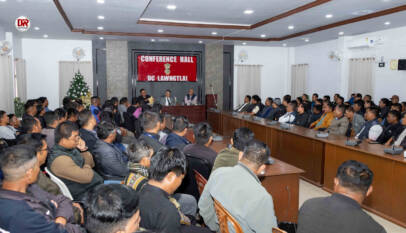Pamban Bridge : An Overview
Honourable Prime Minister Mr. Narendra Modi has inaugurated & offered the nation – one of the greatest engineering marvels, the Pamban Bridge. An envy to the rest of the world is truly one such wonders which the country would boast upon for centuries.
Ramanathaswamy temple:
- The longest pillared corridor temple in the world (1,220 meters) is at the centre of the town. This temple is closely associated with Lord Rama and Lord Shiva. It is one of the twelve Jyotirlinga (believed to be consecrated by Bhagwan Ram), and Rameshwaram is one of the Char Dham’s.
- As per mythology, to absolve himself from the sin of killing a Brahman (Ravana), Bhagwan Ram wanted to worship Bhagwan Shiva.
- Rama sent Hanumana to bring the worship god Shiva from Kailash. But it was getting late. Mata Sita made a Linga of sand known as Ramalingam. Bhagwan Ram worshipped at the temple.
- It has 64 holy water bodies (theertham) around the temple. Pilgrims believe that bathing in these teerthams absolves them of all sins.
Island
- Pamban Island, also called Rameswaram Island separated from mainland India by the Pamban channel and is about 40 kilometres from Mannar Island, Sri Lanka.
- The nearest point from Dhanushkodi to the Tallaimannar is only 19 KM.
- Before the cyclone of 1480, it was part of Mainland. During the period of Thirumalai Naiacker, the ruler of Madurai, Nayak Dynasty, a causeway was constructed across the Pamban channel connecting the island to the mainland.
- Geological evidence suggests that the Rama Sethu was a former land connection between India and Sri Lanka.
The initial plan and the old rail Bridge:
- The plan was to make direct railway connectivity with the mainland, Pamban, and Ceylon. Later, it was decided to have a rail line up to Dhanushkodi and from Dhanushkodi to Talaimannar, Sri Lanka, bridged by ship.
- The work started in June 1911, and the line was opened on 24-02-1914. The train and Ferry service began on the same day. The train was called Indo-Ceylon Express ‘The Boat Mail’.
The 1964 Cyclone:
- The area witnessed a massive cyclonic storm on December 22, 1964.
- The six coach Pamban – Dhanushkodi Passenger train left Pamban at 11.55 p.m. on that day with 110 passengers on board including a party of students and five members of the railway staff.
- Shri. Arunachalam Kumarasamy, the Bridge Inspector, Pamban, piloted the train. The signal at Dhanushkodi outer went dead and the train stopped for a while. The driver decided to take a risk and gave a long whistle. That is when a giant 20 ft wave rose from the turbulent sea and smashed the train.
- Though the initial reports put the causality figure at 115 (based on the number of tickets issued at Pamban), it was suspected that the toll would have been around 200 as more passengers, were said to have travelled ticketless on that night.
- The tragedy came to light only on the 25th of December when the Southern Railway issued a bulletin based on the information received from the Marine Superintendent, Mandapam.
- There were reports that huge pieces of train’s wooden carriages were washed ashore on the Sri Lankan coast. Apart from the train accident, the death toll on the island exceeded 500.
- All communication was disrupted. The Pamban viaduct was washed away leaving only the piers, few PSC Girders and the lifting span.
- Shri Arunachalam Kumarasamy, who lost his life while piloting the passenger train, was born at Kilakulam village in Tinnevelly District, in 1923.
- He studied at the St. Xavier’s High School, Palamkottah and in M.D.T. Hindu College, Tinnevelly. He later studied at College of Engineering, Guindy, where he passed the Upper Subordinate Examination in 1943. After working in the Public Works Department of the Government of Madras for about five years, he joined the former South Indian Railway as a Permanent way Sub-Inspector in 1948.
- Shri Kumarasamy was a good and sincere worker. All the staff members were fond of him. He was of religious and charitable disposition and constructed a hospital in the memory of his late father, Sri K. Arunachalam Pillai at Kilakulam.
Restoration:
Due to the cyclone, 105 spans of 12.20 metres steel girders and 21 spans of PSC girders were completely washed away. Only 19 pre-stressed concrete girder spans on the Mandapam end were unaffected. Fortunately, the Scherzer Span also remained undisturbed. Two piers were partially damaged.
- The restoration work was carried out simultaneously from both ends.
- At Pamban end, fortunately, a BFR was available and two girders were coupled and mounted over the BFR and this was used from the Pamban end. A progress of launching three to four spans a day was achieved.
- All the girders could be salvaged (except the PSC girders) by means of steel pontoons, that were floated in the sea and towed by motor boat.
- The restoration works were supervised and monitored by Dr. E. Sreedharan, who was the Executive Engineer then.
- The restoration was completed by 1st March 1963 (within 67 days of the incident). In 2002, a decision was taken to convert the bridge from meter gauge to broad gauge (BG). The first Broad Gauge train started in August 2007.
The new bridge:
- The Railway Ministry sanctioned the reconstruction of the Pamban Railway Bridge in February 2019. PM Modi laid the foundation at Kanyakumari on 1st March 2019.
- The bridge substructure is designed & constructed to cater for future double lines with electrification.
Salient features of the new bridge:
| Aspect | Details |
| Location of Bridge | Ramanathapuram District, Tamil Nadu. |
| Year of Sanction | Feb – 2019 |
| Year of Completion | Nov – 2024 |
| Total Span 100 | 99 X 18.30m + 1x 72.50m |
| Length | 2.08 km |
| Cost | 704 Cr |
| Lifting Time | 5 Min 30 Sec |
| Authorised Speed | 75 Km/h |
Corrosion proof:
- The bridge is constructed with Stainless steel Reinforcement.
- Base level height of the girder is 3 meters above the old bridge. This safeguards the girders from the splash of seawater.
- After metalising, painting was done with 3 layers of epoxy and 2 coats of polysiloxane.
- No Joints in the girder. 19.65 m-long plates were specially made at the steel plant and transported in special longer trucks to eliminate the splice joint. Joints were corrosion-prone, and with the new bridge, more than 100 joints were eliminated. Design protection against corrosion is 35 years.
- The sub-structure of the bridge is built with special additives that act as Corrosion inhibitors to improve the durability.
- Scanning of all Butt welds by PAUT (Phased array ultrasonic test).
- 20m long Rails 60kg have been specially used to reduce the number of rail joints.
Difference in old and new bridge:
| Items | Old Bridge | New Bridge |
| Movement | Angular up to 81 degrees | 17M vertical lift Girder base at the same level of a road bridge |
| Span | 147; 145 X 12 M; 1 X 61 M | 100; 99 X 18.3 M; 1 X 72 M |
| Design | Scherzer | TYPSA & MC 2 (Spain) |
| Gauge | Meter (later GC) | Broad Gauge |
| Vertical clearance above sea level | 3 metres | 5 metres |
| Clearway for Ships | 60 metres | 72 metres |
| Operation Time | 30 Minutes | 5 Minutes 30 Seconds |
| Man required for lifting | 8 | 1 |
| Total Length of the Bridge | 2.08 KM | 2.1 KM |
| India’s first | First Sea Bridge | First Vertical-lift Sea Bridge |
| Speed | 10 Km/hour | 50 Km/hour |
| Anti-Corrosion painting | Yearly | 10 Year |
Trains:
- One new train will start connecting all the newly converted GC sections
- Rameshwaram will be connected by 14 pairs of train extensions and one new train from Tambram to Rameshwaram.
- 06 Daily trains: 02 Mail/Express from Chennai Egmore and 3 passenger trains from Madurai, and 01 Mail/Express from Tiruchirappalli.
- 02 Tri-weekly: 1 from Tirupati and 1 from Kanyakumari
- 06 Weekly trains: Each from Ayodhya, Coimbatore, Okha, Varanasi, Firozpur, Bhubaneswar.
Team Maverick
Major action in statewide crackdown against drug mafia in state
The State Government is pursuing a zero-tolerance policy against narcotics. As part of the…




















